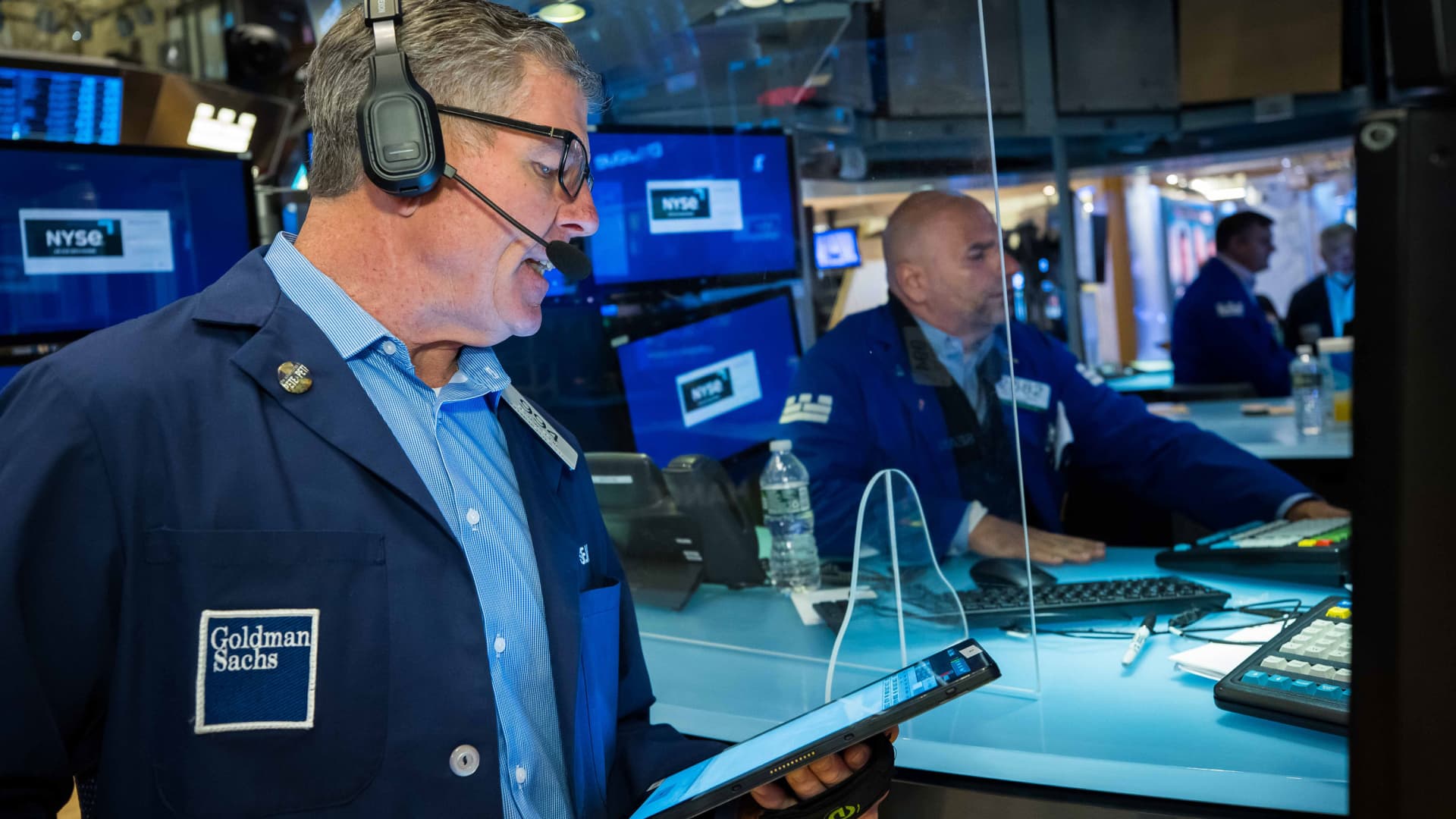Products You May Like
As the market reacted in alarm to Federal Reserve Chair Jerome Powell’s hawkish comments and determined tone on Friday, I struggled to retrieve an analogous situation that ended well.
My conclusion is that, although we have experienced a bear-confirming drop of over 20% on the S&P 500, followed by a rally of 17%, and now a fade of 6.2%, this feels most like steep waves of buying and selling within a range rather than another deep descent to new lows.
If that’s the case, we need to keep our heads above water amid these fierce swings. Years ago, when I took my Red Cross lifeguard test, one of the requirements was to tread water for two minutes in a lake traversed by wake-producing speedboats. What’s two minutes? Nothing, right?
No, even two minutes in one place, is hard work. A few hours watching the S&P 500 collapse can seem interminable. It’s as if investors are being asked to tread water in violent seas for what seems like an eternity. Holding our heads up, breathing without panic and holding steady within the current, are all difficult tasks.
Inflation at the center of the choppiness
It’s not too much of a stretch to suggest that the market cares more about inflation than anything else. It’s naïve to believe that inflation exists in a vacuum, where it can simply disappear without collateral damage.
Something must give, whether it’s the labor market, housing prices, or consumer spending — each of which contributes to a sense of well-being that investors crave. When the July jobs number came in at close to twice expectations, the market rallied, but 528,000 net new jobs was highly inflationary.
There is a lot of noise in the marketplace: OPEC will cut supply, the labor market remains incredibly tight and the war in Ukraine keeps dragging on – all inflationary. Layoffs and hiring freezes in high tech, Ukraine grain shipments resume and home sales stall – all disinflationary.
Depending on what piece of news emerges each day, the stock market can read these data bytes as very positive or highly negative in the battle against inflation, igniting sharp swings in either direction. Chasing each move in sentiment is a dangerous, and often foolish, exercise.
The road to much lower inflation is likely to be littered with damaged earnings and stock prices in the near term. The S&P 500 is down 15% this year, while the Nasdaq Composite is off 22%, so isn’t some of that destruction already priced into shares?
Second-quarter earnings and guidance — other than for energy stocks and a few lucky outliers — failed to blow anyone away. That suggests that we are already in a slowdown, and higher interest rates, or the fear of them, is having some impact. Inflation is still galloping along, but economies are weakening.
In July, there were 285 downward 2023 estimate changes for S&P 500 companies compared to 164 increases. Many of the upward moves were in the energy and materials sectors due to commodity price changes. Assuming that S&P 500 earnings estimates hold steady at the current level of $247 per share, the index is trading at a price-earnings multiple of 16.5 times forward earnings. If those estimates erode by 10%, then we are back to a multiple of 18 times, which is not particularly cheap or expensive, even with interest rates moving upward.
Finding stocks in turbulent times
Until we have more clarity about where inflation is heading, we may be stuck in a trading range, bracketed by the June lows and the August highs, for the rest of the 2022. So where do we place our bets, other than cash, under the treading water scenario?
The “safe” money is sticking with what’s worked so far this year: energy (up 49% year to date), utilities (higher by 5%) and consumer staples (down 4%) versus a 15% decline for the S&P 500. These groups still offer strong cash flows, but their prices reflect the hordes of investors who have flooded into their shares.
However, the consensus is often wrong, so I am inclined to buy some of the strongest names in the weakest sectors: communication services (off 30% in 2022), consumer discretionary (down 22%) and technology (declining 20%).
While it’s been a big mistake not to own energy stocks this year, the strength in commodity prices is predicated on the war in Ukraine persisting, since macro weakness is a negative for oil and gas demand. Making that bet after such a huge rally has its own risks.
The tables below show a stark contrast in some of the stellar performing “defensive” stocks, such as Colgate, Procter & Gamble, and PepsiCo, compared to two of the largest communications services names, Meta and Alphabet. Both are facing a weak advertising environment, among other challenges, but they trade at significantly lower multiples than their staple peers, with higher growth rates.
Another option for investors looking to put idle cash to work in the short term, is 6-month Treasurys that yield over 3%. By the end of the winter, we should have much more evidence of whether the Fed has been successful in its efforts. Then we can stop treading water and start swimming again.
In the meantime, as someone who played water polo in college can tell you, there is a ton of kicking under the surface while we tread water. You can suffer a nasty kick from that position, but you can also score a goal.
Karen Firestone is chairperson, CEO and co-founder of Aureus Asset Management, an investment firm dedicated to providing contemporary asset management to families, individuals and institutions.
